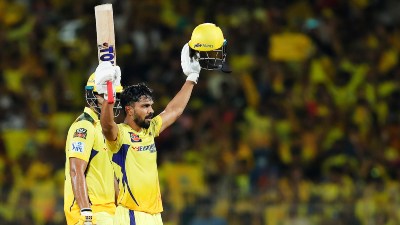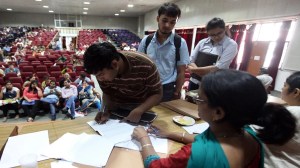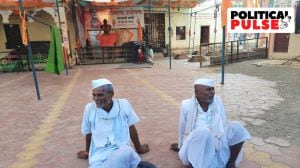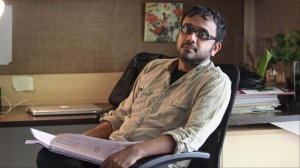- India
- International
Mixed Reality Surgery: a new step forward in medical innovation
HoloLens is a wireless, holographic mixed reality headset that connects with apps and solutions, helping surgeons to operate with greater precision.
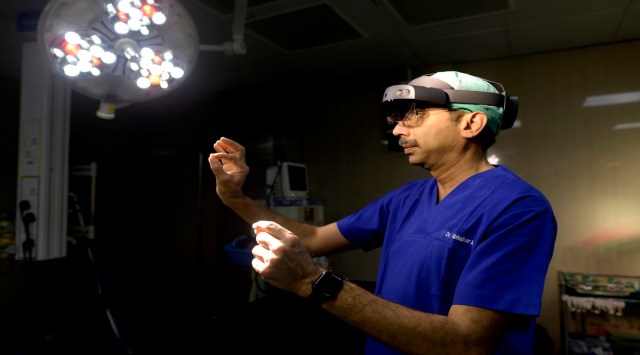 After seven such surgeries done through the mixed reality method, Dr Babhulkar, founder and President of the Shoulder and Elbow Society of India, is confident of taking on two every month.
After seven such surgeries done through the mixed reality method, Dr Babhulkar, founder and President of the Shoulder and Elbow Society of India, is confident of taking on two every month.When Dr Ashish Babhulkar, a shoulder surgeon in Pune, took on his first case — a 72-year-old woman with a rotator cuff tear in November last year — his every move was witnessed by some of the finest experts in the field of ‘mixed reality’ surgery in the UK and France.
“It’s like wearing a computer screen in your eye,” says Dr Babhulkar, who is the only surgeon in the country trained to use HoloLens that allows a three-dimensional holographic image of a patient’s anatomy.
HoloLens is a wireless, holographic mixed reality headset that connects with apps and solutions, helping surgeons to operate with greater precision. After seven such surgeries done through the mixed reality method, Dr Babhulkar, founder and president of the Shoulder and Elbow Society of India, is confident of taking on two every month.
It was in December 2017 that Professor Thomas Grégory of the Avicenne AP-HP Hospital, France, led a unique effort in performing the first-ever mixed reality surgery. He involved 13 surgeons from 13 different countries and that included Dr Babhulkar, the sole surgeon from India, for undertaking 13 mixed reality orthopedic operations as part of a 24-hour event. The surgeons virtually collaborated using Microsoft HoloLens 2 and Dynamics 365 Remote Assist.
“Mixed reality transforms surgical practices and the new HoloLens 2 acts as an assistant and allows us to use technology to secure and standardise surgeries, Dr Babhulkar told The Indian Express.

“Compared to previous designs, HoloLens 2 is lighter, more comfortable and immersive for the surgeon. The hand and eye-tracking technology detects where the surgeon’s gaze is, allowing them to operate with greater precision,” he said.
So much so that in the initial two surgeries taken up by Dr Babhulkar in November and December last year at the Deenanath Mangeshkar Hospital, the surgeon recalled how his colleagues sitting in France and the UK had a bit by bit view of what he was doing.
“It is like three brains in one operation theatre. In a sense, it is like wearing a helmet with a visor which acts as a computer screen for the surgeon. All the data is ready from the patient’s X-rays and other medical records and unlike the conventional surgery I would have to go to the console, look at the X-ray carefully and then return to the patient, here I can get a three-dimensional image while operating,” Dr Babhulkar explains.
The surgeon, however, adds that it is a challenge as there is a need to remain still without shaking one’s head while operating. “The technology is fantastic. Even if I so much as shift my gaze or just briefly turn my head, I have experts tapping my shoulder remotely reminding me to stay fixed. Not just that but adapting to new technology can be challenging,” says Dr Babhulkar who was trained in this technique and had a dry run last year from July to October before he took on his first case of a 72-year-old woman from Goa with a rotator cuff tear.
The ball of her shoulder bone had gone upwards and the socket was unevenly damaged. “She had undergone a reverse shoulder replacement surgery in the conventional method in 2019 and was willing to be operated via the mixed reality method. Dr Babhulkar superimposed a holographic image of the socket implant on top of the patient before inserting it to get a perfect fit. An assessment of how fast she recovers will be done but she was discharged on the third day after the surgery,” Dr Babhulkar said.
Like every new technology, the challenge was also with the bandwidth. “Every hospital has a firewall and does not allow seamless transfer of data but authorities here gave us a separate and secure line. It’s like a bullet train and experts were able to communicate with me instantly, without any transmission lag. Learning these new skills, and how to manage talking and operating is a challenge. But just imagine that eventually an orthopaedic surgeon in Kenya, who has a HoloLens, wants to start doing this surgery. He does not have to come to India to learn. We can walk him through the process,” said Dr Babhulkar.
– Stay updated with the latest Pune news. Follow Express Pune on Twitter here and on Facebook here. You can also join our Express Pune Telegram channel here.
Click here to join Express Pune WhatsApp channel and get a curated list of our stories
Apr 24: Latest News
- 01
- 02
- 03
- 04
- 05











